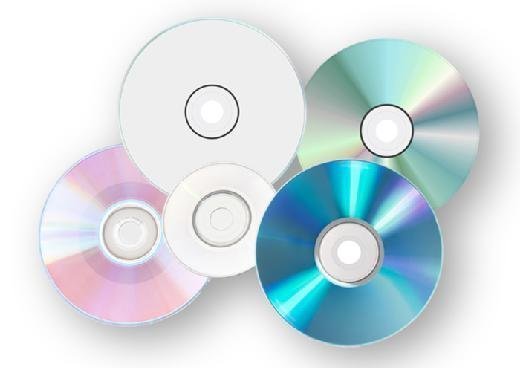CD-ROM
What is a CD-ROM?
A CD-ROM (Compact Disc Read-Only Memory) is a type of compact disc that can only be read, not written to. It is a digital storage medium that can hold large amounts of data, including text, images and audio.
The data on a CD-ROM is encoded in a spiral track that begins at the center of the disc and extends to the edge. This track is read by a laser, which is reflected back to a sensor in the CD drive.
How does a CD-ROM work?
The original data format for CD-ROM was defined by Philips and Sony in the 1983 Yellow Book. Other standards are used in conjunction with it to define directory and file structures, including ISO 9660, HFS (Hierarchical File System, for Macintosh computers) and Hybrid HFS/ISO.
The format of the CD-ROM is the same as for audio CDs: a standard CD is 120 mm (4.75 inches) in diameter and 1.2 mm (0.05 inches) thick and is composed of a polycarbonate plastic substrate (underlayer -- this is the main body of the disc), one or more thin reflective metal (usually aluminum) layers and a lacquer coating.
It works by being inserted into a CD drive, the drive's laser beam scans the surface of the disc, reading the data stored in the spiral track. The data is then converted into a digital signal that the computer can understand and process. The drive also has a lens that focuses the laser beam on the disc surface, allowing it to read the data accurately.
Constant Linear Velocity (CLV) is the principle by which data is read from a CD-ROM. This principle states that the read head must interact with the data track at a constant rate, whether it is accessing data from the inner or outermost portions of the disc. This is affected by varying the rotation speed of the disc, from 500 rpm at the center to 200 rpm at the outside.

CD vs. CD-ROM
Both CDs and CD-ROMs are types of optical discs that use a laser beam to read the data stored on them. However, while CDs are primarily used for audio content and can be written to, CD-ROMs are used for storing and distributing data such as software and can only be read.
Advantages of CD-ROMs
There are several advantages to using CD-ROMs for software distribution. These include:
- Large storage capacity. CD-ROMs can hold large amounts of data, making them ideal for storing and distributing software. A standard CD-ROM can hold up to 700 megabyte (MB) of data, while a dual-layer disc can hold up to 8.5 gigabyte (GB) of data.
- Durability. CD-ROMs are relatively durable compared to other storage media. They can withstand scratches and minor physical damage without losing their data.
- Widely compatible. CD-ROMs can be read by most computers and CD drives, making them a widely compatible software distribution method.
- Offline access. CD-ROMs allow users to access software offline, which is important for businesses that might not have a reliable internet connection.
Disadvantages of CD-ROMs
There are also some disadvantages to using CD-ROMs. These include:
- Limited storage capacity. While CD-ROMs have a large storage capacity compared to floppy disks, they are still limited compared to other storage options like USB drives and hard drives.
- Fragility. While CD-ROMs are relatively durable, they can still be easily damaged by scratches or physical trauma.
- Slow data transfer. CD-ROMs have a slower data transfer rate compared to other storage options, which can make installation and use of software more time-consuming.
- Limited updating capability. Once a CD-ROM has been distributed, it cannot be updated. If a software bug is discovered or a new feature is added, a new version of the software must be created and distributed on a new CD-ROM.
In today's digital age, CD-ROMs might seem like a relic of the past. However, despite the rise of cloud storage and online downloads, CD-ROMs are still widely used for business software distribution.
See why the future of data storage must handle heavy volume.
